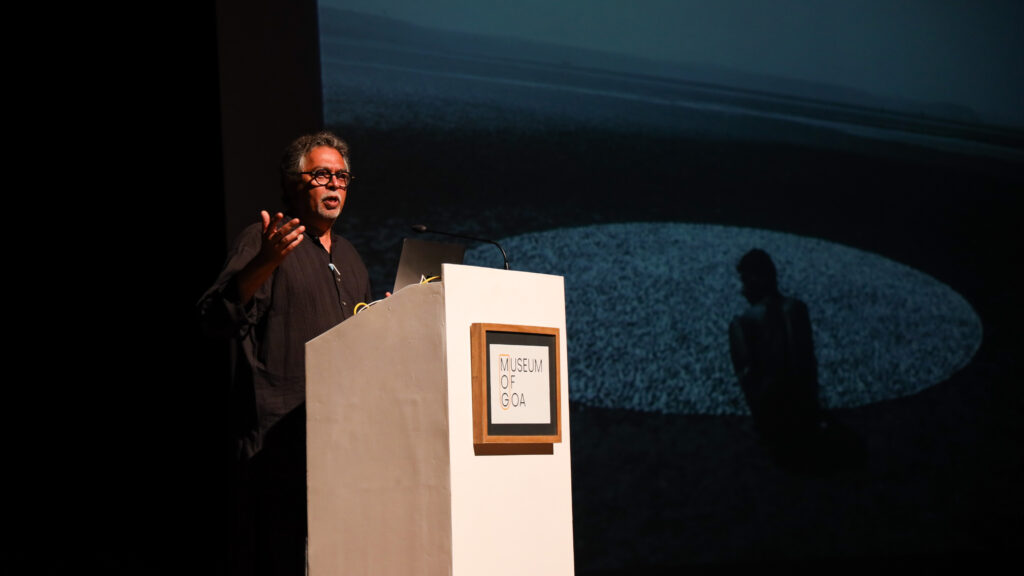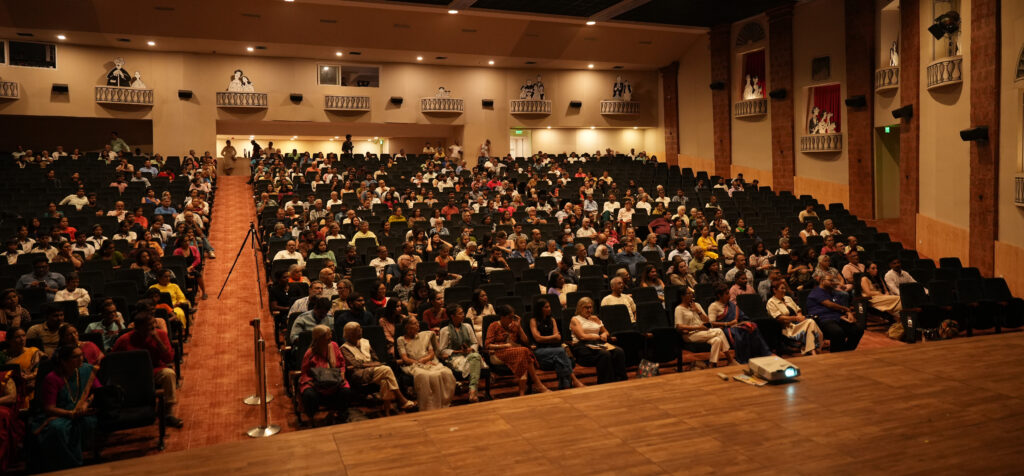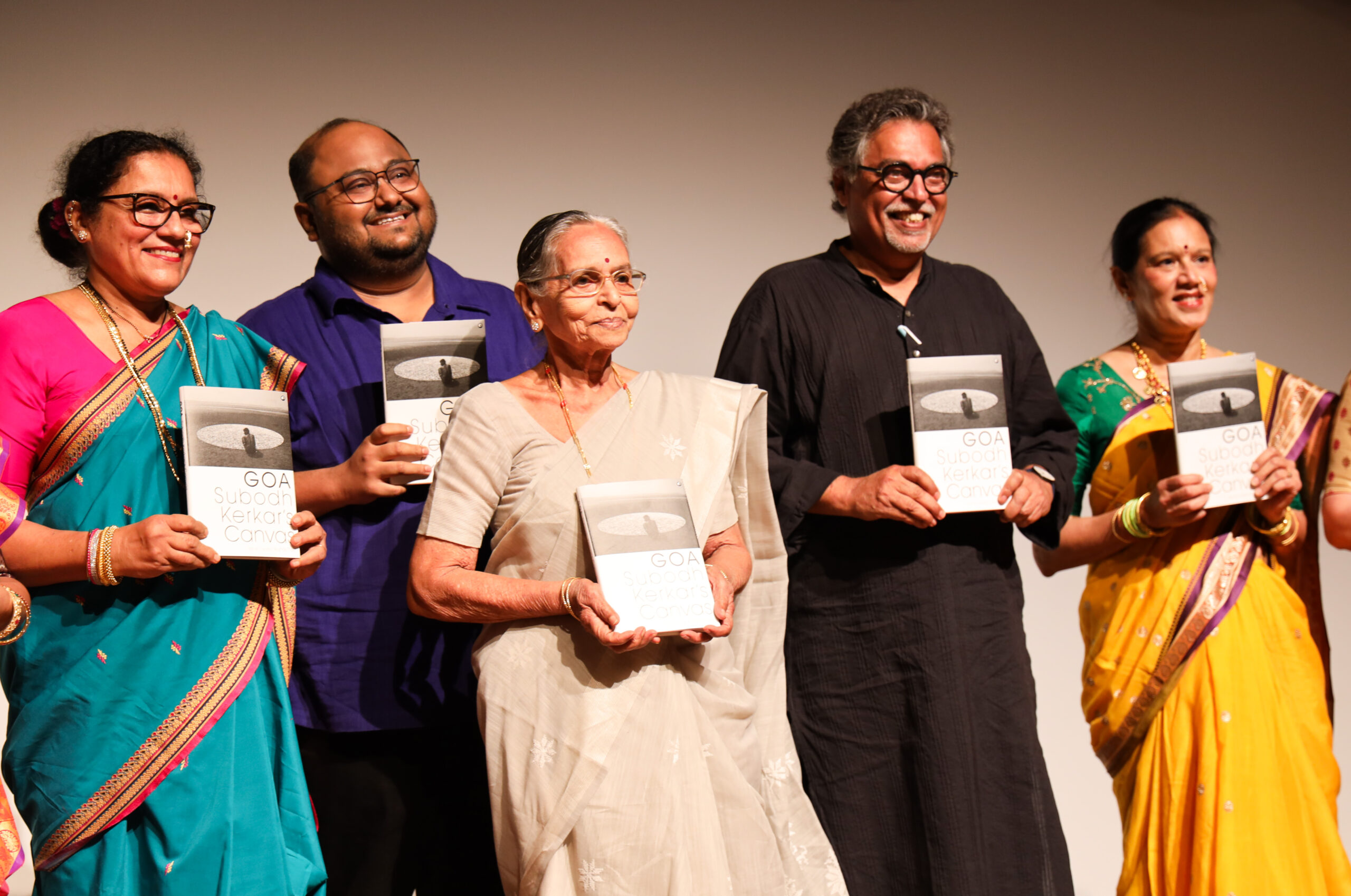
~ Goa was a hub for trading horses, spices and even slaves during the colonial era.
~ Kerkar cited a personal anecdote, where he used the humble rice to exact ‘poetic revenge’ on Portuguese explorer Vasco da Gama.
Renowned for his unique art installations and his penchant for incorporating Goa’s rich history on his artistic canvas, well-known Goan artist Dr Subodh Kerkar pieced together the vibrant and varied echoes of Goa’s past at his recent talk, ‘Glimpses of Goa’s Histories,’ where he highlighted the region’s deep-rooted connections and contributions to the history of mainland India.
Kerkar’s lecture, which was held to mark the launch of academic Kunal Ray’s book, ‘Goa: Subodh Kerkar’s Canvas’, drew from historical facts and anecdotal evidence that Kerkar came across in his research on Goa’s history, which forms an integral element of his art.
Contrary to popular belief, Goa, Kerkar said, was connected with the world as a spice trade hub, even before the advent of the Portuguese colonisers. “When the Portuguese came, it (Goa) became the centre of the trade because the Portuguese took over the spice trade, which was basically controlled by the Arabs previously,” Kerkar said in his lecture, which dissected various stages in Goan history, even before the advent of the Western colonial era. “The Portuguese had total control of the Arabian Sea and anybody doing any business in the Arabian Sea had to have a Portuguese licence. As a result, Old Goa became a very, very prosperous port,” he said.

Kerkar said that in the 1560s, the prosperous port of Old Goa even outrivalled London in terms of population, trading a range of commodities, from horses to spices to even slaves.
“Horses were some of the most important goods for trading after pepper… The cost of pepper, if it was ₹1 in Goa, it was ₹100 in Europe,” said Kerkar, founder of the Pilerne-based Museum of Goa, adding that horses offloaded in Goa were sold to buyers from the Vijayanagar empire in Southern India.
Slave trade, a high revenue generating business of the times, also had its roots in Goa, with a majority of the slaves sourced from Mozambique, he said. “Everybody talks about the Atlantic slave trade, but in Goa we had a lot of slave trade. In fact, Goa was the centre of slave trade… Most of the slaves were from Mozambique,” Kerkar said, adding that during the heyday of slave trade, one horse could be traded for as many as five slaves.
Kerkar also offered insights into how his artistic journey intersects with Goa’s maritime legacy through the use of discarded fishing canoes in his sculptures. Reflecting on the shift from traditional wooden boats to easily maintainable fibreglass ones among local fishermen, he explained how he repurposes these relics of the past into evocative installations.
“One of the functions of art is basically to stir memory,” Kerkar said. “I celebrated the navigational connection between the Arabian countries and India; Arab ships came to Lothal 5,000 years ago, and I wanted to honour that history through these sculptures.” The exhibit involving discarded wooden fishing boats was later showcased at an exhibition in Dubai.
Kerkar also shared a personal anecdote, citing tongue-in-cheek how he exacted “poetic revenge” on Portuguese explorer Vasco da Gama, when the former was invited to Lisbon’s Tapada das Necessidades, a garden near the Lisbon harbour. A chapel housed in the garden is known for its historic legacy, because sailors who set off on their journey to discover new lands, including Vasco da Gama and Alfonso de Albuquerque, sought divine blessings in it. When the municipality of Lisbon invited a few artists from around the world to create installations during the garden’s renovation, Kerkar had his ‘revenge’ against da Gama.
“So I said the Portuguese have changed all the food habits of India. Let me take a poetic revenge on them. I never take revenge, only poetic revenge. And so I took rice from Goa and I planted it in this garden in the shape of the sea route of Vasco da Gama. When the rice sprouted, it did not just sprout rice; it sprouted history,” Kerkar said.


